Your browser does not fully support modern features. Please upgrade for a smoother experience.

Submitted Successfully!
Thank you for your contribution! You can also upload a video entry or images related to this topic.
For video creation, please contact our Academic Video Service.
| Version | Summary | Created by | Modification | Content Size | Created at | Operation |
|---|---|---|---|---|---|---|
| 1 | Dionisis Kandris | + 9207 word(s) | 9207 | 2021-12-08 07:23:09 | | | |
| 2 | Vivi Li | -2364 word(s) | 6843 | 2021-12-20 03:52:12 | | | | |
| 3 | Lindsay Dong | Meta information modification | 6843 | 2022-03-28 05:37:56 | | |
Video Upload Options
We provide professional Academic Video Service to translate complex research into visually appealing presentations. Would you like to try it?
Cite
If you have any further questions, please contact Encyclopedia Editorial Office.
Kandris, D. Applications of Wireless Sensor Networks. Encyclopedia. Available online: https://encyclopedia.pub/entry/17294 (accessed on 11 January 2026).
Kandris D. Applications of Wireless Sensor Networks. Encyclopedia. Available at: https://encyclopedia.pub/entry/17294. Accessed January 11, 2026.
Kandris, Dionisis. "Applications of Wireless Sensor Networks" Encyclopedia, https://encyclopedia.pub/entry/17294 (accessed January 11, 2026).
Kandris, D. (2021, December 18). Applications of Wireless Sensor Networks. In Encyclopedia. https://encyclopedia.pub/entry/17294
Kandris, Dionisis. "Applications of Wireless Sensor Networks." Encyclopedia. Web. 18 December, 2021.
Copy Citation
A Wireless Sensor Network (WSN) is a group of spatially dispersed sensor nodes, which are interconnected by using wireless communication. The purpose of this entry is to provide an up-to-date presentation of both traditional and most recent applications of WSNs and hopefully not only enable the comprehension of this scientific area but also facilitate the perception of novel applications.
wireless sensors
wireless sensor networks
1. Introduction
A Wireless Sensor Network (WSN) is a group of spatially dispersed sensor nodes, which are interconnected by using wireless communication [1]. As seen in Figure 1, a sensor node, also called mote, is an electronic device which consists of a processor along with a storage unit, a transceiver module, a single sensor or multiple sensors, along with an analog-to-digital converter (ADC), and a power source, which normally is a battery. It may optionally include a positioning unit and/or a mobilization unit.
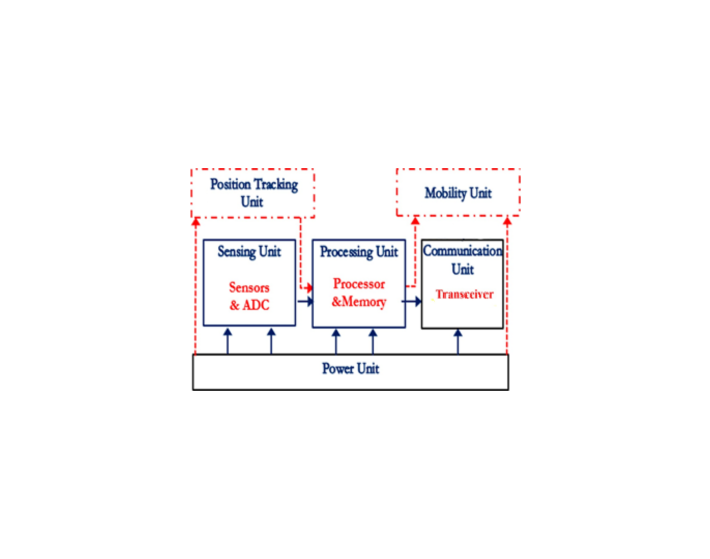
Figure 1. The typical architecture of a sensor node used in Wireless Sensor Networks (WSNs).
A sensor node uses its sensor(s) in order to measure the fluctuation of current conditions in its adjacent environment. These measurements are converted, via the ADC unit, into relative electric signals which are processed via the node’s processor. Via its transceiver, the node can wirelessly transmit the data produced by its processor to other nodes or/and to a selected sink point, referred to as the Base Station.
As illustrated in Figure 2, the Base Station, by using the data transmitted to itself, is able to both perform supervisory control over the WSN it belongs to and transmit the related information to human users or/and other networks [2].

Figure 2. The typical architecture of a WSN.
The collaborative use of a sufficient quantity of such sensor nodes, enables a WSN to perform simultaneous data acquirement of ambient information at several points of interest positioned over wide areas. The inexpensive production of sensor nodes of this kind, which despite their relatively small size, have exceptionally advanced sensing, processing, and communication abilities has become feasible due to continuous technological advances. For this reason, although WSNs were initially used mainly for military purposes, nowadays they support an ever-growing range of applications of different types [3].
2. Main WSN Applications
Various applications of WSNs are currently either already in mature use or still in infant stages of development. In this paper, WSN applications are classified according to the nature of their use into six main categories which, as illustrated in Figure 3, namely are: military, health, environmental, flora and fauna, industrial, and urban.

Figure 3. Overview of the most popular categories of applications of WSNs.
In each category, various subcategories are considered. In what follows in this section, the nature of each one of these categories and subcategories is explained. Additionally, through the indicative examination of characteristic examples of them, their particular features are explained, while their benefits and problems are denoted.
Moreover, various methodologies and technical means that are used in these applications either for sensing or for processing purposes are discussed, while similarities and dissimilarities existing among them are identified.
2.1. Military Applications
The military domain is not only the first field of human activity that used WSNs but it is also considered to have motivated the initiation of sensor network research. Smart Dust [4] is a typical example of these initial research efforts, which were performed in the late 90 s in order to develop sensor nodes which despite their very small size would be capable of accomplishing spying activities.
The technological advances achieved since then made WSNs capable of supporting various operations [5]. In Figure 4, the main subcategories of the military applications of WSNs which namely are battlefield surveillance, combat monitoring, and intruder detection, are illustrated along with the types of sensors that are most commonly used in them.
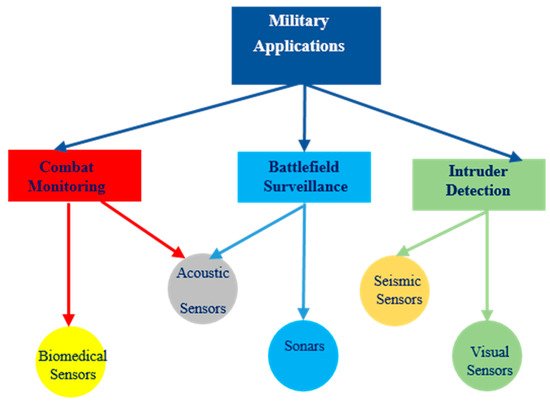
Figure 4. The subcategories of the military applications of WSNs and the types of sensors they use.
Specifically, Chemical, Biological, Radiological, Nuclear and Explosive (CBRNE), and Toxic Industrial Material (TIM) sensors may be used to detect the presence of such substances. To detect intrusion, WSNs may use infrared, photoelectric, laser, acoustic, and vibration sensors. Similarly, RAdio Detection And Ranging (RADAR), LIght Detection And Ranging (LIDAR), LAser Detection And Ranging (LADAR) and ultrasonic sensors are used by nodes in WSNs in order to detect the distance from objects of interest. Likewise, LADAR and infrared sensors are used for imaging purposes. Additionally, the flexibility that WSNs have in their structure enables them to adapt to various requirements. For instance, in battlefield operations large-scale WSNs consisting of many thousands of nodes, which are non-manually deployed, are used. In urban warfare and force protection operations, WSNs used consist of hundreds of manually deployed nodes. In other-than-war operations all scales of WSNs and deployment methods are used [5].
2.1.1. Battlefield Surveillance
In applications of this type, the sensor nodes of the WSN may be deployed on a battlefield nearby of the paths that enemy forces may use. The main advantage provided is that the WSN not only can be spontaneously positioned but also can function, without need for continuous attendance and maintenance. The terrain of the battlefield in most cases is absolutely variable. This plays an important role for both the coverage and the energy consumption of the sensor nodes. Some of these applications are presented below.
In [6], the use of WSN technology for ground surveillance is studied. Specifically, the authors propose a system that consists of low-cost common nodes which are capable of sensing magnetic and acoustic signals produced by various moving target objects. The system aims to detect and categorize various targets, such as vehicles and troop movements, based on the spatial differences of the signal strength detected by the sensors. Figure 5 illustrates the architecture of this system.
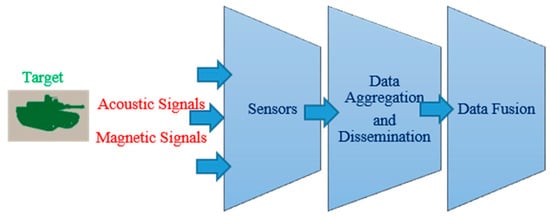
Figure 5. Illustration of the system architecture proposed in [6] for target tracking.
In [7] a submarine detection system for Anti-Submarine Warfare (ASW) is presented. The system consists of inexpensive multi-sensing units that combine both active and passive sonars. The system can be scaled to a large number of sensors, which are deployed in littoral waters according to a specific pattern and ocean depth. These sensing units utilize their passive sonar to detect a diesel-electric submarine and their active sonar to confirm their target. The unit that has confirmed a target, notifies its neighboring sensing units by using an alarm signal that contains its ID code. Whenever the units send multiple alarm signals within a predefined period of time, an alert is triggered. Furthermore, the system can acquire low False Alarm Rate (FAR) due to the very low range of the active sonar (50 m) that solves the acoustic multipath problem of the conventional sonobuoys.
2.2. Health Applications
In the health domain, WSNs utilize advanced medical sensors to monitor patients within a healthcare facility, as a hospital or within their home, as well as to provide real time monitoring of patient’s vitals by utilizing wearable hardware. In Figure 6, the main subcategories of health applications of WSNs namely patient wearable monitoring, home assisting systems, and hospital patient monitoring are illustrated along with the types of sensors that are most commonly used in them. WSNs that have been developed for these types of health applications are examined in the following subsection.
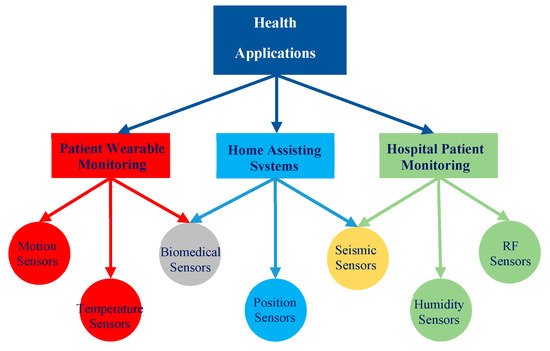
Figure 6. The subcategories of the health applications of WSNs and the sensors used in them.
2.2.1. Patient Wearable Monitoring
Health monitoring applications can be combined with wearable hardware with embedded biomedical sensors that provide the patient’s health status in a remote environment or within a healthcare facility.
A healthcare solution of this type, is examined in [8]. It uses real-time sensors incorporated in smartphones along with a barcode system to provide personalized medicine care assistance. The mechanism developed, performs Electrocardiogram (ECG) monitoring in real time. Also, the monitoring of the blood glucose level, blood pressure, and several kinds of diagnostics could be possible too, by using real-time sensors. This system developed is illustrated in Figure 7.

Figure 7. An illustration of the real time electrocardiogram (ECG) monitoring environment [8].
An alert portable tele-medical monitor system (AMON) is proposed in [9], aiming to provide continuous monitoring for high-risk cardiac/respiratory patients. The system collects multiple vital signs, detects multi-parameter medical emergencies and is connected to a cellular telemedicine center (TMC). This system uses a wrist worn device, to monitor vital parameters of patients in order to provide an integrated picture of their health condition.
2.3. Environmental Applications
Environmental applications that demand continuous monitoring of ambient conditions at hostile and remote areas can be improved with the utilization of WSNs. In Figure 8, the main subcategories of environmental applications of WSNs, namely water monitoring, air monitoring, and emergency alerting, are depicted along with the types of sensors that are typically used in them. WSNs that have been developed for these types of environmental applications are studied in the following subsection.
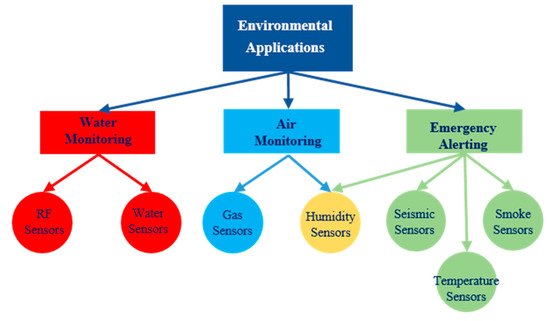
Figure 8. The subcategories of the environmental WSN applications and the types of the sensors used in them.
2.3.1. Water Monitoring
Water, either for drinking or oceanic is an important factor in human lives, therefore the monitoring of water has a great academic interest for researchers as described below.
The researchers in [10] designed a WSN application to evaluate the quality of fresh drinkable water. They designed a Cyber physical system (CPS) called PipeSense, which is an in-pipe system for water monitoring that utilizes RFID (Radio Frequency Identification) based WSN. The network can provide information about water demand or water quality and various repair information such as weak spots or pipe leakage. The in-pipe RFID sensors collect information from the system and send them to the data servers, where algorithms provide decision support.
A WSN application for marine environment monitoring is presented in [11]. In order to prevent damage to the flora and fauna of a fish farm from feed and fecal waste, the authors designed an Underwater WSN (UWSN) with ground based wireless sensor nodes capable of monitoring the pollution of the farm. The sensor nodes are mobile in a limited space in order to measure a greater area.
2.3.2. Air Monitoring
Air is a vital element for human lives and nowadays the air pollution of the atmosphere is a result of many modern human activities. WSNs can be utilized for air quality monitoring in occupied regions in order to prevent dangerous diseases and contaminations or risk the health of people.
A characteristic example of an application of this kind is presented in [12], where an air quality monitoring application assisted by WSNs, called WSN-AQMS, is proposed. The specific system combines gas sensors along with Libelium waspmotes [13] to measure air quality parameters of gases such as ozone, CO, and NO2. The waspmotes monitor in real time the air quality and utilize the Zigbee protocol for data communication. The authors further introduced the Clustering Protocol for Air Sensor network (CPAS) in order to support the operation of this system
2.3.3. Emergency Alerting
Proactive monitoring of the causes of natural disasters, can help to avoid these disasters or/and lower their cost. WSNs can be utilized for monitoring common disastrous causes in real time to provide proactive alerts in order to lower damage or even prevent disaster. Typical examples described in the rest of this subsection, are related to the monitoring of seismic activity, volcanic activity, forest fires, and tsunamis.
Seismic Activity Monitoring
Earthquakes can cause enormous damage to an occupied region where they take place. WSNs can be utilized to monitor seismic activity in real time in order to take precautionary measures and enable the authorities to act in advance. A real time seismic activity monitoring system is presented.
In [14], the authors designed a warning system for earthquakes in order to increase the time before an earthquake so as to take precaution measures. The authors deployed a WSN in the island of Mauritius, which has high seismic activity. The system monitors seismic activity by utilizing primary waves (P-waves) and estimates local velocity and the hypocenter’s location according to time delays in the arrival of the P-waves at the sensors.
Volcanic Activity Monitoring
Volcanoes can cause enormous damage to nearby towns or cities when they are activated. Before a volcano erupts, there are many signs that a WSN system can measure, proactively, in order to inform nearby citizens about the eruption. When such a system is applied, citizens can protect their families and belongings by transporting them outside of the area of the eruption, preventing further damage. Below is an example of such a system.
In [15], a WSN based system to monitor volcanic activity components is proposed. The system is low cost, flexible, and easy to deploy and to maintain for remote locations. The users of the system can choose GPS data synchronization when the sensor nodes have signal reception, or a specific algorithm when they have not, to collect accurate timestamps of each sample. Pieces of the equipment used, are shown in Figure 9.

Figure 9. A depiction of a geophone sensor with a wireless antenna deployed in the field [15].
2.4. Flora and Fauna Applications
Both flora and fauna domains are vital for every country. In Figure 10, the main subcategories of flora and fauna applications of WSNs which namely are greenhouse monitoring, crop monitoring, and livestock farming, are illustrated along with the types of sensors that are most commonly used in them.
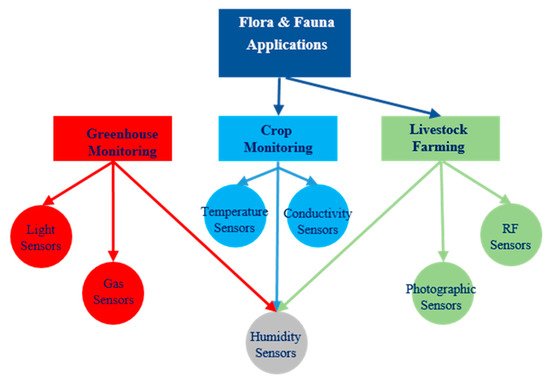
Figure 10. The subcategories of flora and fauna applications of WSNs and the types of the sensors used in them.
WSNs that have been developed for these types of flora and fauna applications are examined in the following subsection.
2.4.1. Greenhouse Monitoring
An important sector of the agriculture domain involves greenhouses. Within them many crops can be grown to provide sustainable food while climate crops can be harvested all year round if certain conditions are applied within the greenhouse. Therefore, WSNs can be applied in greenhouse monitoring and control to improve their operation. Below are some examples of these applications
In [16], a system of this type, called the Agricultural Environment Monitoring System (AEMS), is presented. It is an inexpensive and easy to apply system that can collect and monitor data related to crop growth, inside or outside a greenhouse via WSN sensors and CCTV cameras. The system gathers vital environmental parameters such as temperature, light intensity, humidity, air pressure, rainfall level, pH, and electrical conductivity (EC).
A relevant system developed for greenhouses which has energy management and indoor climate control capabilities, is introduced in [17]. The system monitors vital greenhouse parameters such as indoor luminance, temperature, and relative humidity, via sensor nodes. The indoor climate control is possible by the utilization of two fuzzy logic controllers, P (Proportional) and PD (Proportional-Derivative) that use the desired indoor climatic set-points. Furthermore, the system utilizes output actuations of heating units, motor-controlled windows and shading curtains, artificial lighting, etc. in order to achieve more precise greenhouse control.
2.4.2. Crop Monitoring
Within the agriculture domain, the preservation of the crops plays a vital role. In order to provide a better environment for the crops, various WSNs applications can be implemented. Crop irrigation and fertilization are some examples of the applications that have been designed as described below.
Hidro Bus is a system described in [18]. It is a remote controlled, automatic irrigation system for large areas of land applied at Jumilla (Murcia, Spain). The system divides the deployment area into seven sub-regions, where each has a control sector for monitoring and controlling. The control sectors communicate with each other and the central controller via WLAN network.
An automated fertilizer applicator system is built in [19], which consists of three modules, the input, the decision support, and the output modules. The input module can provide to the Decision Support System (DSS) module, GPS and real time sensor data by utilizing bluetooth technology. With these data the DSS is able to calculate quantity, application rate, and the spread pattern of the fertilizer that the output module will provide to the crops.
The authors of [20] developed and integrated an optimal fertilization decision support system using a wireless sensor LAN, IEEE 802.11 protocol (Wi-Fi) and a GIS analysis server. Sensor nodes were used to acquire vital data in real time such as soil moisture, conductivity, temperature, etc. Also, the system used B/S a (browser/server) structure mode to provide high interactivity. Also, a GIS analysis server was used to interpolate the data from small experimental plots to larger plots to exploit data reduction for energy conservation. An overview of the overall system architecture is illustrated in Figure 11.

Figure 11. A structure diagram of the integrated optimal fertilization decision support system [20].
Similarly, in [21] a scheme based on the collaboration of an integrated system for an automated irrigation management with an advanced novel routing protocol for WSNs, was proposed. This system aims at efficiently managing water supply in cultivated fields in an automated way. The system takes into consideration the historical data and the change in the climate values to calculate the quantity of water that is needed for irrigation.
2.5. Industrial Applications
WSNs can be applied in various industrial applications to solve many related problems. In Figure 12, the main subcategories of industrial applications of WSNs namely logistics, robotics, and machinery health monitoring are illustrated. These specific categories of applications are studied in the rest of this subsection.

Figure 12. The subcategories of the industrial applications of WSNs and the types of the sensors used in them.
2.5.1. Logistics
The domain of logistics is an area of interest where WSNs can be applied, because many logistics systems need real time monitoring of various environmental parameters and better handling of packages. These requirements can be fulfilled by combining the logistics systems with WSNs. Some types of these applications are described below.
The transport logistics sector requires low cost and high-quality during deliveries. In [22], the development and deployment of a WSN based system for monitoring transportation conditions, such as temperature and humidity, within a cargo container travelling via both a trans-Atlantic cargo vessel and a lorry is described. The main idea for the deployment of the monitoring system is depicted in Figure 13. It is shown that the use of a system of this kind, can increase quality by providing better supervision and lower the cost by reducing losses during transportation.

Figure 13. Depiction of the basic configuration of a WSN based system for transport logistics applications [22].
The application of WSNs in Cold Chain Logistics (a continuous temperature-controlled supply chain) can greatly improve the monitoring and management of these chains [23]. WSNs are suitable for real time monitoring of many environmental parameters and provide accurate data collection that meets the demand of Cold Chain Logistics. The researchers used a Zigbee ad hoc network model to build the system’s framework. By using fuzzy control decision, the environmental parameters are maintained in a stable range and with Maximum Similarities Multiple Characteristic Recognition (MSMCR) the safety of cold-chain food is ensured.
Another application of WSNs developed for Cold Chain Logistics is studied in [24]. This system focuses only on aquatic products and their transportation. In order to develop such a system, the authors proposed a WSN integrated with Compressed Sending (CS), in order to combat heavy data traffic from the real time sensor data transmission. Also, CS provides a low complexity approximation which assists storage, transmission, processing, and meets the recourse constraints of WSNs.
A WSN application in logistics that utilizes GPS technology is described in [25]. This system monitors in real-time the status of the goods and has embedded a terminal, which is used to locate the goods and a cloud services platform, which is used to identify the recipient.
2.5.2. Robotics
Nowadays there are many applications that combine WSNs and robots. Robots can cooperate and combat some of the major problems of WSNs, such as sensor node mobility, node redeployment, travelling salesman, etc. Typical WSN applications of this kind are presented below.
A robotic navigation method proposed in [26] provides road maps for the robot to traverse. It uses a WSN with sensors, designed to provide sophisticated maps of their sensing areas. Specifically, each sensor constructs a map, based on the traversable area sensed. Then, all sensor maps are combined to create one large map. Once the road maps are generated, the sensors are used to sense areas of interest for the robot to travel to. The robot then considers all possible roads to take and selects the most efficient path available in the network. If an area becomes hazardous for the robot, the network can reconfigure the road map, and remove this hazardous area from the list of available paths.
One of the most difficult tasks concerning WSNs is the maintenance of a projected network. A combination of WSNs and robotics was researched in [27], where a robotic network servicing system, named Randomized Robot assisted Relocation of Static Sensors (R3S2) was developed. In R3S2, robots move around a network which is contained within a virtual grid. The robot moves to the least recently visited grid point, searching for sensing holes in the network. When an area that is not being covered by a sensor is detected, the robot will find a node which has overlapping coverage with other nodes and move it to the uncovered area. In addition, if the robot discovers redundant sensors, it will move the nodes to cover a greater area.
A different approach is proposed in [28], where a mobile robot is used to transfer data from a widespread network between nodes that are out of reach from one another for various reasons. This is the so-called travelling salesman problem (TSP)—within a WSN. By having a robot traveling among nodes which are out of each other’s wireless communication range, it allows the network to be widespread while also saving power by using the robot for data muling.
2.5.3. Machinery Health Monitoring
The objective of machinery health monitoring is to examine the performance of various types of technical equipment and to either detect or predict the occurrence of faults that are obstructive or even catastrophic for their operation.
In [29], a WSN is developed in order to perform energy usage evaluation and condition monitoring for electric machines. The motor efficiency and health condition are estimated non- intrusively by using wireless nodes that monitor the motor terminal quantities (i.e., line voltages, line currents, and temperature, with no interference with the operation of the electric machines.
In [30], a WSN based monitoring system of oil and gas pipelines, named REMONG, is proposed. In order to detect the existence of leakages, the system uses wireless sensor nodes which monitor the pressure and temperature of the pipeline fluid at several points of interest on the pipelines which are stretched over large geographical areas.
In [31] a WSN designed to enhance safety in industrial machinery consisting of a main vehicle and an attached trailer is proposed. A 3D accelerometer and a 3D magnetometer, incorporated in a sensor system device, monitor the trailer operating conditions and the corresponding data are wirelessly transmitted to a processing unit which executes a stability control algorithm. A vibrational energy harvesting system developed, converts kinetic energy from trailer natural vibrations to electrical energy for the system power supply.
2.6. Urban Applications
The variety of sensing abilities offered by WSNs also provides an opportunity to gain an unprecedented level of information about a target area, be it a room, a building, or outdoors. WSNs are indeed a tool to measure the spatial and temporal features of any phenomena within an urban environment, providing a limitless number of applications. The most popular applications of WSNs in the urban domain are related to smart homes, smart cities, transportation systems, and structural health monitoring, as depicted in Figure 14 and further described in the rest of this subsection.
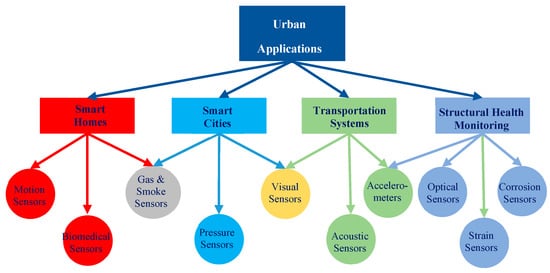
Figure 14. The subcategories of the urban applications of WSNs and the types of the sensors used in them.
2.6.1. Smart Cities
In large cities monitoring of various parameters is crucial for the optimal life of the citizens. WSNs have a huge amount of applications to provide real time data to the authorities for the optimal function of a city. Specifically, increased transportation of people creates problems and time wastage, when a large number of vehicles is heading towards common destinations. WSNs can be utilized for monitoring in order to reduce traffic, indicate car parking spots, etc. [32].
In [33] a WSN-based intelligent car parking system is proposed. Specifically, within a car park area, each parking lot is equipped with one inexpensive sensor node, which detects the occupation or vacancy of this parking lot. A base station collects data relative to the status of all parking lots and sends periodic reports to a database. This database can be accessed by the upper layer management system in order to execute several tasks, such as vacant parking lots discovery, security supervision, automated toll, or/and statistic report creation.
In [34], a system to measure and classify road traffic based on WSN is proposed. The nodes of this system have integrated magnetic sensors and are deployed along the road in order to provide real time traffic monitoring. This configuration has been proposed as an easy and cheap to implement alternative to inductive coils that are traditionally deployed in roads for basic traffic control tasks. The architecture adopted in the system proposed is graphically presented in Figure 15.

Figure 15. A depiction of the various setups where WSNs can be deployed [34].
In [35], a system for road traffic control near flooded tunnels is proposed. The specific system, consists of a WSN and a centralized control system. The analogue output signals of sensors, located in the interior of two underground tunnels, are converted to digital ones which are next transmitted through serial-to-Ethernet converters to an access point. Following a corresponding procedure the signals reach a programmable logic controller, which monitors the level of water in the interior of two underground tunnels and accordingly not only regulates the water drainage of flooded tunnels by using pumps, but also performs traffic control of vehicles approaching the entrance to the tunnels.
A WSN based system for street lighting monitoring and control is presented in [36]. This system enables the remote control of street lighting lamps, by using Doppler sensors to allow for vehicle detection. The light intensity of the lamps is increased, to a preset level, in the presence of approaching vehicles and reduced in the absence of them.
2.6.2. Smart Homes
In the era of informatics, various systems can improve human lives. Wireless sensor networks can be applied in the indoor environment as in smart homes where machine to machine communications take place. Two typical examples are the indoor localization and motion monitoring and the monitoring of the indoor air quality.
Specifically, the monitoring of indoor air quality (IAQ), which is a term that refers to the air quality of a building, has become, with the rapid urbanization process that is taking place, one of the most important topics of WSN urban applications. Modern people spend a great part of their life within a building, thus the air quality plays a critical role for their health, safety, and comfort. In order to monitor IAQ the authors of [37] developed a WSN application that utilizes wireless nodes equipped with gas sensors for sensing and communicating wirelessly in real time.
Similarly, the WSN based IAQ monitoring system, which is described in [38], uses sensor nodes that measure temperature, relative humidity, and concentration of carbon dioxide in classrooms in order to correlate the level of indoor air quality with the students’ level of performance in their studies.
Another popular application of indoor localization and motion monitoring that uses WSNs, is described in [39]. The authors developed a system, which is used to estimate the position of a person within an indoor environment. The system utilizes mobile sensor nodes worn by the moving persons and a network of static sensor nodes at known locations. To calculate the person’s position, the system gathers data from the nodes in a central PC and applies Monte Carlo based estimation algorithms to track the moving persons in real time.
2.6.3. Transportation Systems
The transportation of vehicles within the urban environment is an important factor for the safety and proper function of public roads. In the modern era various researchers have proposed many systems in the transportation domain, which by utilizing WSNs can improve the safety of roads and provide information during the use of them by drivers. Below we present some relative WSN applications applied in the transportation domain.
In [40] the authors describe a WSN application for VANETs. This application using Secure Multimedia Broadcast Framework (SMBP) is to monitor a persons’ way of driving by utilizing a processing unit on the vehicle, which analyzes data, collected from the sensors in order to calculate the cost of the driver’s insurance. The described system is utilized in order to determine how much the driver detects nearby vehicles, drives with caution, follows the traffic law, or uses a mobile device. The sensing system includes a static sensor board that provides the sensed data via cellular network to the control center and a Global Position System/Universal Mobile Telecommunications System (GPS/UMTS) module in order to connect to the Internet. The basic configuration of SMBP is depicted in Figure 16.
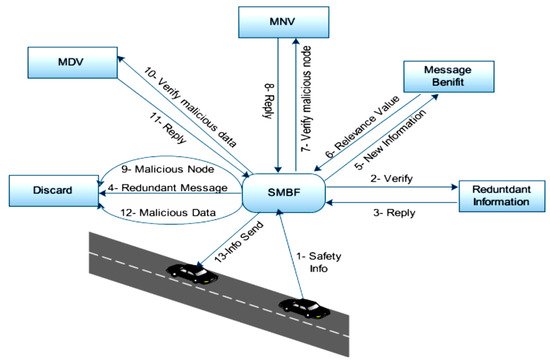
Figure 16. A representation of the Secure Multimedia Broadcast Framework (SMBP) [40].
In [41] a system is proposed, which analyzes the performance of a vehicle on the road by utilizing a telematics WSN. The system utilizes deployed sensor nodes on the road and a sink node on the roadside. The sensors nodes detect the passing vehicles and transmit data to the sink node. Furthermore, when an event occurs a packet is created, the sink node implements a timestamp to it and forwards it to the com node, which utilizes a level-based static routing protocol. Next, the com node forwards this packet to the user, which analyzes the provided information in order to determine various metrics of the road such as a vehicle’s speed, lane vehicle density etc. A depiction of the overall system configuration is shown in Figure 17.

Figure 17. A graphical depiction of the WSN based transportation monitoring system [41].
In recent years, various WSN have been deployed within cities resulting in the formation of small WSN based islands. In [42] the authors describe an integration of these existing islands deployed along the roadside, in order to be utilized for post-accident management and to prevent accidents. Furthermore, the authors utilize two wireless standards i.e., IEEE 802.15.4 and IEEE 802.11p due to the need for separate roadside sensor units. In order to prevent accidents, the WSN islands constantly detect road conditions and transmit information to the vehicles passing by the area, which aggregate these data. Then the vehicle that has this information, transmits warning messages to nearby vehicles in order for the data to be disseminated along the road. The post-accident gathered information is restricted, by the authors, in order to be used only by authorized personnel such as insurance companies, criminological teams, or other authorities. Moreover, according to the authors, the post-accident management can function properly by communicating with the WSN islands on the roadside, without the use of VANETs. The overall system operation is illustrated in Figure 18.
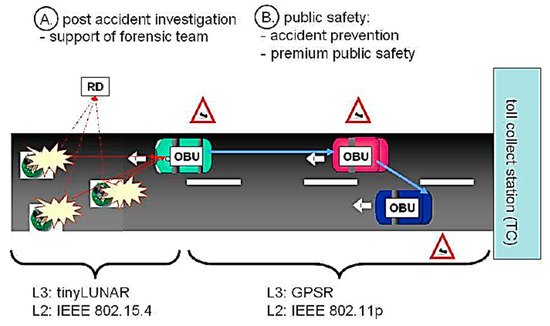
Figure 18. An illustration of the WSN deployed for an Intelligent Transport system [42].
The researchers of [43], presented a mechanism that controls the speed of a vehicle by utilizing an infrastructure-to-vehicle communication via WSNs. In the described system the traffic lights utilize long-range RFID tags, which can measure a vehicle’s speed and communicate with the vehicle’s onboard RFID tags, to avoid collisions. The onboard RFID tags are able to provide feedback to actuators, which can change the longitudinal speed by controlling various parameters of the vehicle such as braking and throttling. Furthermore, the authors created a fuzzy logic algorithm enabling the automatic control of the vehicle. Structural elements of the system developed are shown in Figure 19.
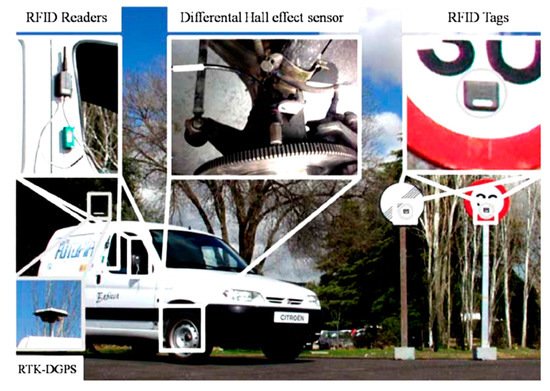
Figure 19. A depiction of the various sensors deployed on a car for experimenting [43].
2.6.4. Structural Health Monitoring
The aim of Structural Health Monitoring (SHM) in buildings and other types of civil engineering substructures, is to monitor their integrity and to detect the existence and the extent of damages in the materials or/and the structure of their bodies. The use of wireless sensors facilitates the accomplishment of tasks of this kind both in a periodic basis and after critical events (e.g., earthquakes).
A WSN application of this kind is presented in [44]. Specifically, a WSN incorporating nodes with appropriate sensors, such as accelerometers and strain gauges, was developed to monitor the restoration works carried out in an old church building located in Italy, which was damaged after an earthquake. The system monitored the on the fly response of the structure to vibrations and enabled the transmission of alert signals when needed.
In [45] the design, development, and deployment of a, WSN based, structural health monitoring platform for a stadium located in the USA is described. By using vibration sensing, the system collects real time, data during athletic and other major events to verify the structural behavior of the stadium, in correlation with the behavior of the audience.
Another structural health monitoring system which makes use of a WSN is presented in [46]. This system is designed, implemented, deployed, and tested to monitor the structural performance of a bridge in China by sensing vibration signals that are produced under various conditions in specific points of interest located at the body of the bridge.
3. Discussion
There is no doubt that WSNs enjoy remarkable capabilities which make them ideal for an ever- extending range of applications. On the other hand, the operation of WSNs comes up with serious problems. Some of them are application dependent.
For instance, in military applications the required physical dimensions and weight of nodes are application dependent. For instance, in some surveillance applications the sensor nodes have to be extremely small in order to be undercover, while in many other military applications, physical dimensions and weight of the nodes are not considered to be important restrictions. On the other hand, nodes in such applications should definitely have an adequately extensive communication range (maybe ≥1 km), while the area to be covered is several square kilometers. Also, communication should attain optimal throughput, reliability, security, and resistance to jamming and intervention. Moreover, nodes should be robust enough to resist severe ambient conditions. Similarly, the WSN should be tolerant to the loss of a certain quantity of nodes.
In health applications, the physical dimensions and weight of the nodes have to be as small as possible particularly in the cases where they are wearable. Conversely, there is not any need for an extended communication range of nodes or area covered. Communication should be fault tolerant, fast, and reliable while jamming should be definitely avoided because the transmission of data is absolutely vital when time critical alert information is sent.
In flora and fauna applications, the limitations, if any, for physical dimensions and weight of the nodes are application dependent. For instance, in WSNs used in livestock farming, nodes which are implanted under the skin of animals must be as small as possible while in agricultural applications such limitations are usually absent. Also, in flora and fauna applications, nodes should be robust enough to stand ambient conditions. Similarly, the WSNs should be tolerant to the loss of a certain quantity of nodes. In addition, in some cases there is need for an extended communication range of nodes and area covered. The volume of data transferred is usually high, but the communication standards that should be met are not very high.
In environmental monitoring the physical dimensions and weight of the nodes are not considered to be the first requisite. Instead, the construction of the nodes has to be extremely robust in order to tolerate severe ambient conditions. Also, both the communication range and the area covered should be adequately wide. Additionally, communication should be resistant to jamming because emergency alerts should be transmitted without delay. Moreover, the WSN should be tolerant to the loss of a certain quantity of nodes.
In industrial applications most tasks are time critical while in the industrial environment the presence of electromechanical interference is remarkable. Therefore, communication should achieve optimal throughput, reliability, and resistance to jamming and interference. It may also be necessary to operate under strict security standards. The communication range and the area covered depends on the nature of the specific application and as do the physical dimensions and weight of the nodes.
In the urban domain, there are different conditions that must be fulfilled in indoor and outdoor applications. Precisely, in WSNs for indoor use nodes have to be of relatively small physical dimensions and weight. Usually there is no need for the communication range and the area covered to be wide. Conversely, communication should attain high security to protect privacy and should resist interference caused by other home appliances. On the other hand, in outdoor urban applications, the physical dimensions and weight of nodes are of minor importance. Yet, both the communication range and the area covered need to be wide. Also, the communication should achieve high levels of throughput, security, reliability, and resistance to jamming and intervention due to the huge volume of data transmitted. Moreover, nodes should be robust enough to ambient conditions. Also, the WSN should be tolerant to the loss of a certain quantity of nodes.
The abovementioned considerations, regarding the required features that WSNs should have per type of application, are synoptically presented in Table 1.
Table 1. Required specifications of Wireless Sensor Networks (WSNs) per type of application.
| Type of Application | Required Specifications | |||||||
|---|---|---|---|---|---|---|---|---|
| Node Weight and Dimensions | Node Robustness | Communication Range | Communication Throughput | Communication Reliability | Communication Security | Network Tolerance | ||
| Military | Application dependent | Very High | Wide | Very High | Very High | Very High | Very High | |
| Health | Small | High | Small | Very High | Very High | High | High | |
| Flora and Fauna | Application dependent | High | Wide | Medium | Medium | Low | High | |
| Environmental | Of minor importance | Very High | Wide | Very High | High | High | Very High | |
| Industrial | Application dependent | Very High | Application dependent | Very High | Very High | High | Very High | |
| Urban | Indoor | Small | Medium | Small | Medium | Very High | Very High | High |
| Outdoor[M1] | Of minor importance | Very High | Wide | Very High | Very High | Very High | Very High | |
Additionally, apart from the aforementioned issues that are application dependent, the operation of WSNs is also obstructed due to general issues, such as difficulties of wireless communication and weaknesses of the nodes.
Specifically, sensor nodes of WSNs suffer from extremely strict energy constraints. This is because their energy is typically supplied by batteries which are usually impractical to be either recharged or replaced, since the locations of sensor nodes are usually difficult or even impossible to reach. Therefore, the attainment of energy conservation is a vital issue for WSNs. For this reason, energy inefficiencies that exist at every one of the five layers of the protocol stack of sensor nodes must be eliminated. Given that data transmission is by far the most energy consuming task of nodes, power control schemes [47], data aggregation schemes that decrease the size of data transferred [48], [49] and energy efficient routing protocols [50] have been proposed. Likewise, in applications in which multimedia data are transmitted, the use of compression and restoration schemes provide a substantial reduction of communication load [51][52]. Additionally, the presence of excessive data traffic in a specific region of a WSN causes network congestion which obstructs data transmission, generates packet losses, and decreases the network throughput. For this reason, methodologies for congestion avoidance [53][54][55], congestion control [56][57], and load balancing [58][59] are used. Furthermore, each time that a node is disconnected from the rest of the network, due to, malfunction, damage, or energy depletion the communication for the remainder becomes more difficult and the communication cost is increased. For this reason, methods for the preservation of network connectivity are essential to be applied [60][61]. Moreover, it is anticipated that the nodes achieve the best exploitation of their sensing range and their communication range in order to cover as much of the network area. This is why coverage maximization methods are considered [62][63]. Moreover, in WSN applications where multimedia data are transmitted, the attainment of high Quality of Service (QoS) is a necessity. Furthermore, the accomplishment of energy efficient routing in WSNs is often influenced by other issues such as the QoS attained [64][65]. Last but not least, in most WSN applications, the data transmitted within the network must be protected from any unauthorized use. For this reason, security preservation schemes are used [66][67].
4. Conclusions
The usage of WSNs already provides remarkable advantages for various domains of human activity. Thanks to the continuous evolution of technology both the capabilities of sensor nodes will keep expanding and their manufacturing costs will become lower. This is the reason why the range of WSN applications is expected to carry on growing.
In this article, the utilization of WSNs in specific domains, namely military, environmental, flora and fauna, health, industrial, and urban, was examined via the investigation of corresponding typical examples, both novel and well-known ones. From this examination, it became evident that the usage of WSNs not only provides numerous advantages in specific domains when compared against the relative means and methods that were traditionally used, but it also introduces novel applications. Additionally, for various applications both the problems and solutions developed, were identified and discussed.
The combinational utilization of relative methodologies and tools will assist both the enhancement of existing applications and the development of novel ones. On the other hand, certain problems that obstruct the usage of WSNs, such as energy limitations, congestion, connectivity loss, inadequate coverage, low QoS, and susceptible security, will remain at the center of scientific research.
References
- Akyildiz, I.F.; Su, W.; Sankarasubramaniam, Y.; Cayirci, E. Wireless Sensor Networks: A Survey. Comput. Netw. 2002, 38, 399–422.
- Yick, J.; Mukherjee, B.; Ghosal, D. Wireless sensor network survey. Comput. Netw. 2008, 52, 2292–2330.
- Arampatzis, T.; Lygeros, J.; Manesis, S. A Survey of Applications of Wireless Sensors and Wireless Sensor Networks. In Proceedings of the 2005 IEEE International Symposium on, Mediterrean Conference on Control and Automation Intelligent Control, Limassol, Cyprus, 27–29 June 2005; p. 719.
- Warneke, B.; Last, M.; Liebowitz, B.; Pister, K.S. Smart dust: Communicating with a cubic-millimeter computer. Computer 2001, 34, 44–51.
- Đurišić, M.P.; Tafa, Z.; Dimić, G.; Milutinović, V. A Survey of Military Applications of Wireless Sensor Networks. In Proceedings of the 2012 Mediterranean Conference on Embedded Computing (MECO), Bar, Montenegro, 19–21 June 2012.
- Bokareva, T.; Hu, W.; Kanhere, S.; Ristic, B.; Gordon, N.; Bessell, T.; Jha, S. Wireless sensor networks for battlefield surveillance. In Proceedings of the Land Warfare Conference, Brisbane, Australia, 24–27 October 2006; pp. 1–8.
- Towle, J.P.; Herold, D.; Johnson, R.; Vincent, H. Low-cost acoustic sensors for littoral anti-submarine warfare (ASW). In Proceedings of the SPIE 6538, Sensors, and Command, Control, Communications, and Intelligence (C3I) Technologies for Homeland Security and Homeland Defense VI, 653814, Orlando, FL, USA, 4 May 2007.
- Hii, P.; Chung, W. A Comprehensive Ubiquitous Healthcare Solution on an Android™ Mobile Device. Sensors 2011, 11, 6799–6815.
- Anliker, U.; Ward, A.; Lukowicz, P.; Troster, G.; Dolveck, F.; Baer, M.; Vuskovic, M. AMON: A Wearable Multiparameter Medical Monitoring and Alert System. IEEE Trans. Inf. Technol. Biomed. 2004, 8, 415–427.
- Nasir, A.; Soong, B.-H.; Ramachandran, S. Framework of WSN based human centric cyber physical in-pipe water monitoring system. In Proceedings of the 2010 11th International Conference on Control Automation Robotics & Vision, Singapore, 7–10 December 2010.
- Lloret, J.; Sendra, S.; Garcia, M.; Lloret, G. Group-based underwater wireless sensor network for marine fish farms. In Proceedings of the 2011 IEEE GLOBECOM Workshops (GC Wkshps), Houston, TX, USA, 5–9 December 2011; pp. 115–119.
- Mansour, S.; Nasser, N.; Karim, L.; Ali, A. Wireless Sensor Network-based air quality monitoring system. In Proceedings of the 2014 International Conference on Computing, Networking and Communications (ICNC), Honolulu, HI, USA, 3–6 February 2014; pp. 545–550.
- Waspmote: Technical Guide. Available online: http://www.libelium.com/downloads/documentation/waspmote_technical_guide.pdf (accessed on 31 December 2019).
- Khedo, K.K.; Bissessur, Y.; Goolaub, D.S. An inland Wireless Sensor Network system for monitoring seismic activity. Future Gener. Comput. Syst. 2020, 105, 520–532.
- Pereira, R.; Trindade, J.; Gonçalves, F.; Suresh, L.; Barbosa, D.; Vazao, T. A wireless sensor network for monitoring volcano-seismic signals. Nat. Hazards Earth Syst. Sci. 2014, 14, 3123–3142.
- Kassim MR, M.; Harun, A.N. Applications of WSN in agricultural environment monitoring systems. In Proceedings of the 2016 International Conference on Information and Communication Technology Convergence (ICTC), Jeju, Korea, 19–21 October 2016.
- Kolokotsa, D.; Saridakis, G.; Dalamagkidis, K.; Dolianitis, S.; Kaliakatsos, I. Development of an intelligent indoor environment and energy management system for greenhouses. Energy Convers. Manag. 2010, 51, 155–168.
- Damas, M.; Prados, A.M.; Gómez, F.; Olivares, G. HidroBus system: fieldbus for integrated management of extensive areas of irrigated land. Microprocess. Microsyst. 2001, 25, 177–184.
- Cugati, S.; Miller, W.; Schueller, J. Automation concepts for the variable rate fertilizer applicator for tree farming. In Proceedings of the 4th European Conference in Precision Agriculture, Berlin, Germany, 15–19 June 2003; pp. 14–19.
- He, J.; Wang, J.; He, D.; Dong, J.; Wang, Y. The design and implementation of an integrated optimal fertilization decision support system. Math. Comput. Model. 2011, 54, 1167–1174.
- Nikolidakis, S.A.; Kandris, D.; Vergados, D.D.; Douligeris, C. Energy efficient automated control of irrigation in agriculture by using wireless sensor networks. Comput. Electron. Agric. 2015, 113, 154–163.
- Becker, M.; Wenning, B.-L.; Görg, C.; Jedermann, R.; Timm-Giel, A. Logistic applications with wireless sensor networks. In Proceedings of the 6th Workshop on Hot Topics in Embedded Networked Sensors, Killarney, Ireland, 28–29 June 2011; pp. 1–5.
- Zhang, H.; Yang, S. Research on Application of WSN in Cold Chain Logistics’ Warehousing and Transportation. In Proceedings of the PPMT 2016 China Academic Conference on Printing & Packaging and Media Technology, Xi’an, China, 25–27 November 2016; pp. 589–598.
- Xiao, X.; He, Q.; Fu, Z.; Xu, M.; Zhang, X. Applying CS and WSN methods for improving efficiency of frozen and chilled aquatic products monitoring system in cold chain logistics. Food Control 2016, 60, 656–666.
- Li, X.; Li, Y. A real-time monitoring and certification system for logistics. Appl. Mech. Mater. 2014, 687, 970–973.
- Yao, Z.; Gupta, K. Distributed roadmaps for robot navigation in sensor networks. IEEE Trans. Robot. 2010, 27, 3078–3083.
- Fletcher, G.; Xu, L.; Nayak, A.; Stojmenovic, I. Randomized Robot Assisted Relocation of Sensors for Coverage Repair in Wireless Sensor Networks. In Proceedings of the 2010 IEEE 72nd Vehicular Technology Conference-Fall, Ottawa, ON, Canada, 6–9 September 2010; pp. 1–5.
- Yuan, B.; Orlowska, M.; Sadiq, S. On the Optimal Robot Routing Problem in Wireless Sensor Networks. IEEE Trans. Knowl. Data Eng. 2007, 19, 1252–1261.
- Lu, B.; Wu, L.; Habetler, T.G.; Harley, R.G.; Gutierrez, J.A. On the application of wireless sensor networks in condition monitoring and energy usage evaluation for electric machines. In Proceedings of the 31st Annual Conference of IEEE Industrial Electronics Society (IECON 2005), Raleigh, NC, USA, 6–10 November 2005; p. 6.
- Saeed, H.; Ali, S.; Rashid, S.; Qaisar, S.; Felemban, E. Reliable monitoring of oil and gas pipelines using wireless sensor network (WSN)—REMONG. In Proceedings of the 2014 9th International Conference on System of Systems Engineering (SOSE), Adelade, SA, Australia, 9–13 June 2014; pp. 230–235.
- Dondi, D.; Napoletano, G.; Bertacchini, A.; Larcher, L.; Pavan, P. A WSN system powered by vibrations to improve safety of machinery with trailer. In Proceedings of the SENSORS, Taipei, Taiwan, 28–31 October 2012; pp. 1–4.
- Zantalis, F.; Koulouras, G.; Karabetsos, S.; Kandris, D. A review of machine learning and IoT in smart transportation. Future Internet 2019, 11, 94.
- Tang, V.W.S.; Zheng, Y.; Cao, J. An Intelligent Car Park Management System based on Wireless Sensor Networks. In Proceedings of the 2006 First International Symposium on Pervasive Computing and Applications, Urumqi, China, 3–5 August 2006; pp. 65–70.
- Corredor, I.; García, A.; Martínez, J.F.; López, P. Wireless Sensor Network-based system for measuring and monitoring road traffic. In Proceedings of the 6th Collaborative Electronic Communications and eCommerce Technology and Research (CollECTeR 2008), Madrid, Spain, 25–27 June 2008.
- Pantazis, N.A.; Nikolidakis, S.A.; Kandris, D.; Vergados, D.D. An Automated System for Integrated Service Management in Emergency Situations. In Proceedings of the 2011 15th Panhellenic Conference on Informatics, Kastonia, Greece, 30 September–2 October 2011; pp. 154–157.
- Lavric, A.; Popa, V.; Sfichi, S. Street lighting control system based on large-scale WSN: A step towards a smart city. In Proceedings of the 2014 International Conference and Exposition on Electrical and Power Engineering (EPE), Iasi, Romania, 16–18 October 2014; pp. 673–676.
- Bhattacharya, S.; Sridevi, S.; Pitchiah, R. Indoor air quality monitoring using wireless sensor network. In Proceedings of the 2012 Sixth International Conference on Sensing Technology (ICST), Kolkata, India, 18–21 December 2012.
- Wang, S.K.; Chew, S.P.; Jusoh, M.T.; Khairunissa, A.; Leong, K.Y.; Azid, A.A. WSN based indoor air quality monitoring in classrooms. AIP Conf. Proc. 2017, 1808, 020063.
- Klingbeil, L.; Wark, T. A Wireless Sensor Network for Real-Time Indoor Localization and Motion Monitoring. In Proceedings of the 2008 International Conference on Information Processing in Sensor Networks (ipsn 2008), St. Louis, MO, USA, 22–24 April 2008.
- Rahim, A.; Khan, Z.; Muhaya FT, B.; Sher, M.; Kim, T.H. Sensor based framework for secure multimedia communication in VANET. Sensors 2010, 10, 10146–10154.
- Yoo, S.E. A wireless sensor network-based portable vehicle detector evaluation system. Sensors 2013, 13, 1160–1182.
- Bohli, J.-M.; Hessler, A.; Ugus, O.; Westhoff, D. A secure and resilient wsn roadside architecture for intelligent transport systems. In Proceedings of the first ACM Conference on Wireless Network Security, Alexandria, VA, USA, 31 March–2 April 2008; pp. 161–171.
- Pérez, J.; Seco, F.; Milanés, V.; Jiménez, A.; Díaz, J.C.; De Pedro, T. An RFID-based intelligent vehicle speed controller using active traffic signals. Sensors 2010, 10, 5872–5887.
- Anastasi, G.; Re, G.L.; Ortolani, M. WSNs for structural health monitoring of historical buildings. In Proceedings of the 2009 2nd Conference on Human System Interactions, Catania, Italy, 21–23 May 2009; pp. 574–579.
- Phanish, D.; Garver, P.; Matalkah, G.; Landes, T.; Shen, F.; Dumond, J.; Abler, R.; Zhu, D.; Dong, X.; Wang, Y.; et al. A wireless sensor network for monitoring the structural health of a football stadium. In Proceedings of the 2015 IEEE 2nd World Forum Internet Things (WF IoT), Milan, Italy, 14–16 December 2015; pp. 471–477.
- Dai, Z.; Wang, S.; Yan, Z. BSHM-WSN: A wireless sensor network for bridge structure health monitoring. In Proceedings of the 2012 Proceedings of International Conference on Modelling, Identification and Control; Wuhan, China, 24–26 June 2012, pp. 708–712.
- Pantazis, N.; Kandris, D. Power Control Schemes in Wireless Sensor Networks. WSEAS Trans. Commun. 2005, 4, 1100–1107.
- Dhand, G.; Tyagi, S.S. Data aggregation techniques in WSN: Survey. Procedia Comput. Sci. 2016, 92, 378–384.
- Krishnamachari, L.; Estrin, D.; Wicker, S. The Impact of Data Aggregation in Wireless Sensor Networks. In Proceedings of the 22nd International Conference on Distributed Computing Systems Workshops, Vienna, Austria, 2–5 July 2002.
- Kandris, D.; Tsioumas, P.; Tzes, A.; Pantazis, N.; Vergados, D.D. Hierarchical Energy Efficient Routing in Wireless Sensor Networks. In Proceedings of the 16th IEEE Mediterranean Conference on Control and Automation (MED’08), Ajaccio, France, 25–27 June 2008; pp. 1856–1861.
- Nikolakopoulos, G.; Kandris, D.; Tzes, A. Adaptive compression of slowly varying images transmitted over wireless sensor networks. Sensors 2010, 10, 7170–7191.
- Nikolakopoulos, G.; Stavrou, P.; Tsitsipis, D.; Kandris, D.; Tzes, A.; Theocharis, T. A dual scheme for compression and restoration of sequentially transmitted images over Wireless Sensor Networks. Ad Hoc Netw. 2013, 11, 410–426.
- Ploumis, S.E.; Sgora, A.; Kandris, D.; Vergados, D.D. Congestion Avoidance in Wireless Sensor Networks: a Survey. In Proceedings of the 2012 IEEE Panhellenic Conference on Informatics (PCI 2012), Piraeus, Greece, 5–7 October 2012; pp. 234–239.
- Kandris, D.; Vergados, D.J.; Vergados, D.D.; Tzes, A. A routing scheme for congestion avoidance in wireless sensor networks. In Proceedings of the 6th Annual IEEE Conference on Automation Science and Engineering (CASE 2010), Toronto, ON, Canada, 21–24 August 2010; pp. 21–24.
- Kandris, D.; Tselikis, G.; Anastasiadis, E.; Panaousis, E.; Dagiuklas, T. COALA: a protocol for the avoidance and alleviation of congestion in wireless sensor networks. Sensors 2017, 17, 2502.
- Ghaffari, A. Congestion control mechanisms in wireless sensor networks: A survey. J. Netw. Comput. Appl. 2015, 52, 101–115.
- Jan, M.A.; Jan SR, U.; Alam, M.; Akhunzada, A.; Rahman, I.U. A comprehensive analysis of congestion control protocols in wireless sensor networks. Mob. Netw. Appl. 2018, 23, 456–468.
- Bouabdallah, Fatma; Bouabdallah, Nizar; Boutaba, Raouf. Load-balanced routing scheme for energy-efficient wireless sensor networks. In Proceedings of the IEEE GLOBECOM 2008-2008 IEEE Global Telecommunications Conference, New Orleans, LO, USA, 30 November–4 December 2008; pp. 1–6.
- Nikolidakis, S.A.; Kandris, D.; Vergados, D.D.; Douligeris, C. Energy Efficient Routing in Wireless Sensor Networks Through Balanced Clustering. Algorithms 2013, 6, 29–42.
- Joshi, Y.K.; Younis, M. Restoring connectivity in a resource constrained WSN. J. Netw. Comput. Appl. 2016, 66, 151–165.
- Pandana, C.; Liu, K.R. Robust connectivity-aware energy-efficient routing for wireless sensor networks. IEEE Trans. Wirel. Commun. 2008, 7, 3904–3916.
- Fan, G.; Jin, S. Coverage problem in wireless sensor network: A survey. J. Netw. 2010, 5, 1033.
- Aziz NA, A.; Aziz, K.A.; Ismail, W.Z.W. Coverage strategies for wireless sensor networks. World Acad. Sci. Eng. Technol. 2009, 50, 145–150.
- Hammoudeh, M.; Newman, R. Adaptive routing in wireless sensor networks: QoS optimisation for enhanced application performance. Inf. Fusion 2015, 22, 3–15.
- Kandris, D.; Tsagkaropoulos, M.; Politis, I.; Tzes, A.; Kotsopoulos, S. A hybrid scheme for video transmission over wireless multimedia sensor networks. In Proceedings of the IEEE 17th Mediterranean Conference on Control and Automation 2009, Thessaloniki, Greece, 24–26 June 2009; pp. 964–969.
- Chelli, K. Security issues in wireless sensor networks: Attacks and countermeasures. In Proceedings of the World Congress on Engineering, London, UK, 1–3 July 2015; Volume 1.
- Kumar, V.; Jain, A.; Barwal, P.N. Wireless sensor networks: security issues, challenges and solutions. Int. J. Inf. Comput. Technol. (IJICT) 2014, 4, 859–868.
More
Information
Subjects:
Engineering, Electrical & Electronic; Engineering, Mechanical; Automation & Control Systems
Contributor
MDPI registered users' name will be linked to their SciProfiles pages. To register with us, please refer to https://encyclopedia.pub/register
:
View Times:
55.7K
Revisions:
3 times
(View History)
Update Date:
28 Mar 2022
Notice
You are not a member of the advisory board for this topic. If you want to update advisory board member profile, please contact office@encyclopedia.pub.
OK
Confirm
Only members of the Encyclopedia advisory board for this topic are allowed to note entries. Would you like to become an advisory board member of the Encyclopedia?
Yes
No
${ textCharacter }/${ maxCharacter }
Submit
Cancel
Back
Comments
${ item }
|
More
No more~
There is no comment~
${ textCharacter }/${ maxCharacter }
Submit
Cancel
${ selectedItem.replyTextCharacter }/${ selectedItem.replyMaxCharacter }
Submit
Cancel
Confirm
Are you sure to Delete?
Yes
No




